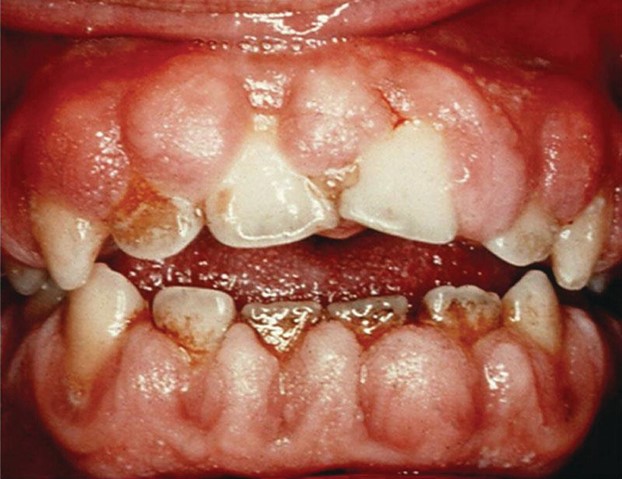A nurse is teaching a client who has a new prescription for phenytoin to treat a seizure disorder. Which of the following adverse effects should the nurse instruct the client to report immediately to the provider?
Tender, bleeding gums.
Increased facial hair.
Constipation.
Skin rash.
The Correct Answer is A
Choice A rationale:

Tender, bleeding gums could be a sign of phenytoin-induced gingival hyperplasia, a serious adverse effect of phenytoin. This condition requires immediate medical attention to prevent further complications.
Choice B rationale:
Increased facial hair is not a common adverse effect of phenytoin and may not require immediate medical attention. It could be due to other factors or conditions.
Choice C rationale:
Constipation is a common side effect of many medications, including phenytoin. While it should be monitored, it does not require immediate reporting to the provider unless severe or persistent.
Choice D rationale:
A skin rash can be an adverse effect of phenytoin, but it does not necessarily require immediate reporting unless it is severe, accompanied by other symptoms, or indicative of a serious allergic reaction.
Nursing Test Bank
Naxlex Comprehensive Predictor Exams
Related Questions
Correct Answer is C
Explanation
Choice A rationale:
Difficulty maintaining personal hygiene is not typically an early indication of mild Alzheimer's disease. In the early stages, individuals can still manage personal hygiene.
Choice B rationale:
Difficulty handling finances may occur in the later stages of Alzheimer's disease, but it is not an early indication. In the early stages, the person might still manage financial matters.
Choice C rationale:
Difficulty remembering the names of new friends is a common early sign of mild Alzheimer's disease. It reflects the impairment of short-term memory that often occurs in the early stages of the disease.
Choice D rationale:
Difficulty driving to and from familiar places is more likely to be a mid-to-late-stage symptom of Alzheimer's disease. In the early stages, individuals might still drive familiar routes with minimal difficulty.
Correct Answer is B
Explanation
Choice A rationale:
A defined area of cool, boggy skin is not indicative of a stage 2 pressure injury. Stage 2 pressure injuries involve partial-thickness skin loss, usually appearing as a shallow open ulcer with a red-pink wound bed, without slough or bruising.
Choice B rationale:
A shallow crater involving the epidermis is characteristic of a stage 2 pressure injury. It presents as a partial-thickness skin loss with the loss of the epidermis, and the wound may be superficial and appear as an abrasion, blister, or shallow ulcer.
Choice C rationale:
The reddened area that does not blanch is more indicative of an early-stage pressure injury (Stage 1). In Stage 1, the skin remains intact, but there is non-blanch-able erythema indicating damage to the skin and underlying tissue.
Choice D rationale:
Undermining or tunneling of the skin is not specific to stage 2 pressure injuries. These features may be observed in more advanced stages of pressure injuries, such as stages 3 and 4, where there is full-thickness skin loss with damage to the subcutaneous tissue and underlying structures.
Whether you are a student looking to ace your exams or a practicing nurse seeking to enhance your expertise , our nursing education contents will empower you with the confidence and competence to make a difference in the lives of patients and become a respected leader in the healthcare field.
Visit Naxlex, invest in your future and unlock endless possibilities with our unparalleled nursing education contents today
Report Wrong Answer on the Current Question
Do you disagree with the answer? If yes, what is your expected answer? Explain.
Kindly be descriptive with the issue you are facing.
